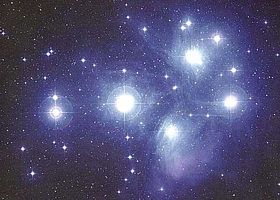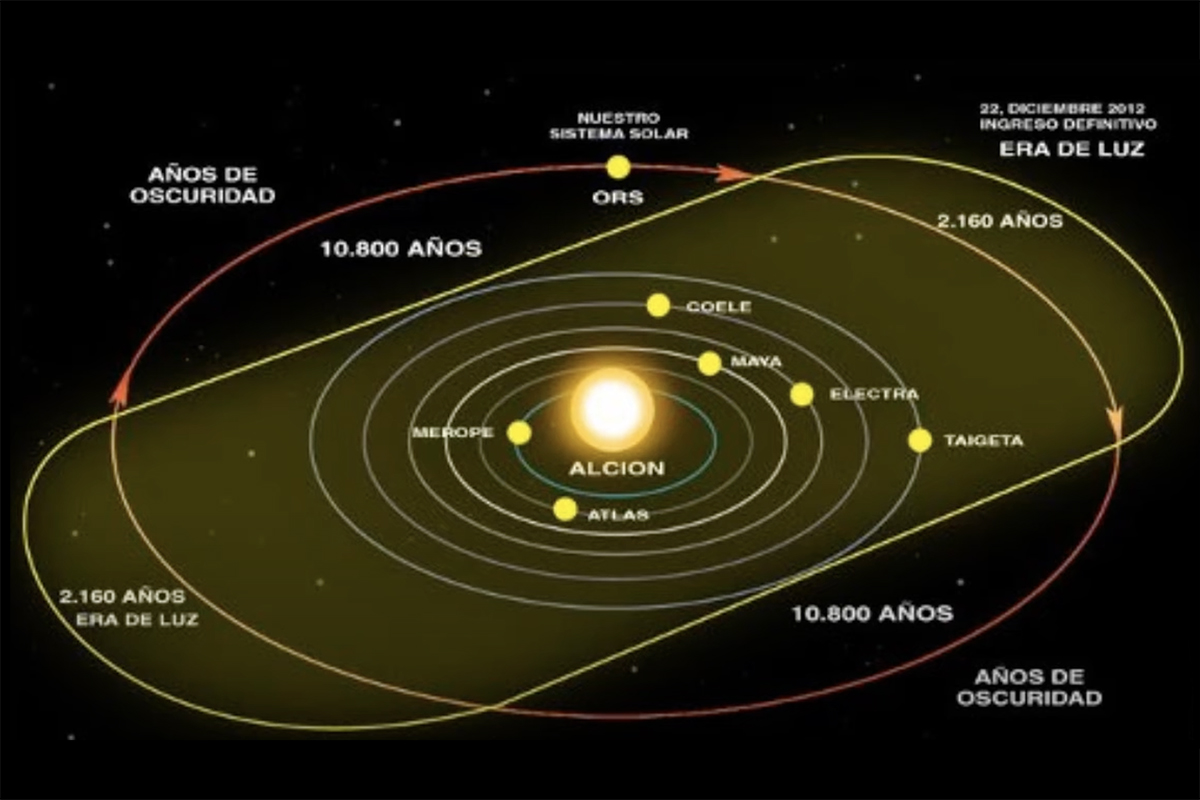 The Pleiades are a young star cluster (they date back ~100 million years) and our Sun had its origin much earlier, ~5 billion years ago. Our star revolves around the center of the Milky Way over a period of 225 million years, heading towards the constellation of Sagittarius (looking towards it you can see the center of our Galaxy).
The Pleiades are a young star cluster (they date back ~100 million years) and our Sun had its origin much earlier, ~5 billion years ago. Our star revolves around the center of the Milky Way over a period of 225 million years, heading towards the constellation of Sagittarius (looking towards it you can see the center of our Galaxy).
The Pleiades are 380 light years away from us, and we cannot speak of "revolving around Alcyone" because of the practically non-existent gravitational influence of this star on us. And even if we were to "revolve" around them (the Pleiades), we would not revolve around a particular star but around a common centre of gravity, as happens with galaxies, star clusters or binary and multiple star systems.
Among some issues that are totally incoherent, according to this theory, is “the halting of the Earth’s rotation.” If the Earth stops rotating around its axis, the most immediate effect is that one hemisphere of the planet would quickly be scorched (the one “pointing” toward the Sun), while the other would freeze (the one “pointing” toward cold space); “the oceans would boil, great hurricanes would ravage the planet, all objects on it would gain weight due to the absence of centrifugal force…” In short, a fact like this would definitely be very deadly in the short term, so much so that we would not even have time to observe this photon belt… which by the way, photons have never been seen to be capable of stopping the rotation of a planet, nor of giving rise to hurricanes or similar catastrophes.
24 continuous hours of light for 2,000 years?
 It is not specified what that “light” would be like, but if we imagine it to be something that provides as much luminosity and heat as our Sun, we are again in trouble. I imagine that the 24 hours of light would be because we would supposedly be surrounded by a halo of light, but that light would have a devastating effect on the planet. We would not feel more tanned or illuminated, but the continents would burn and the oceans would melt; humans would perish, and even if that “light” were not as powerful as the Sun, having 24 hours of light would cause severe alterations in our circadian rhythms. However, if a photon belt were very close to us, it would be seen without problems by professional and amateur astronomers, since it is supposedly such a powerful source that it can contain the entire planet. But there is no belt in sight…
It is not specified what that “light” would be like, but if we imagine it to be something that provides as much luminosity and heat as our Sun, we are again in trouble. I imagine that the 24 hours of light would be because we would supposedly be surrounded by a halo of light, but that light would have a devastating effect on the planet. We would not feel more tanned or illuminated, but the continents would burn and the oceans would melt; humans would perish, and even if that “light” were not as powerful as the Sun, having 24 hours of light would cause severe alterations in our circadian rhythms. However, if a photon belt were very close to us, it would be seen without problems by professional and amateur astronomers, since it is supposedly such a powerful source that it can contain the entire planet. But there is no belt in sight…


